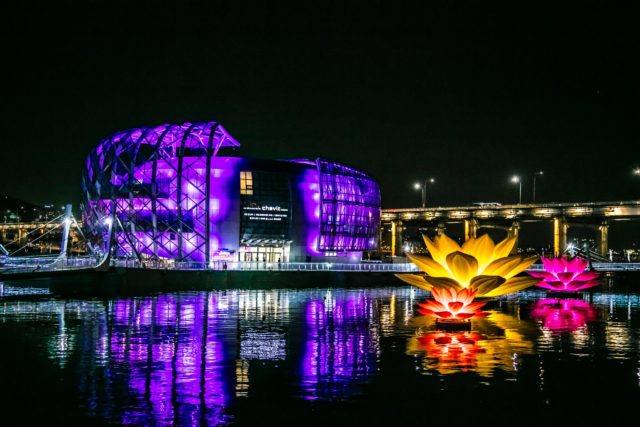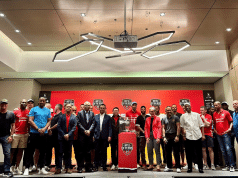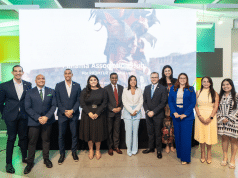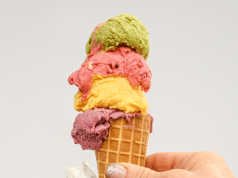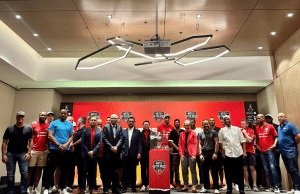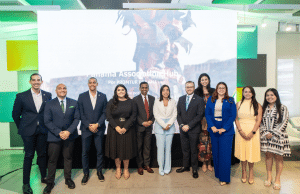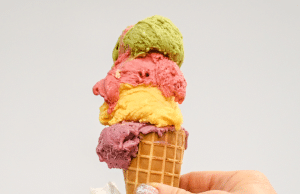Like a hot air balloon gradually and steadily gaining height, over the past decade Seoul has year on year been surpassing its own lofty expectations, firmly consolidating its current UIA top three ranking and now soaring as the kind of global destination that those still grounded can only look up to and aspire to become. In the year 2016 alone Seoul managed to deliver 526 international congresses according to UIA stats and 137 meetings according to ICCA – remarkably that’s a minimum of an event every day, from whatever end of a telescope the stats are looked at.
As a super-advanced Asian mega-city that ticks all the boxes for delivering the highest level events to take place anywhere on the planet – think G20 Summit Olympic Games and Winter Olymics for starters – we took a ‘p-eek’ at just some of the reasons why Seoul’s hot-allure balloon keeps on flying higher and higher.
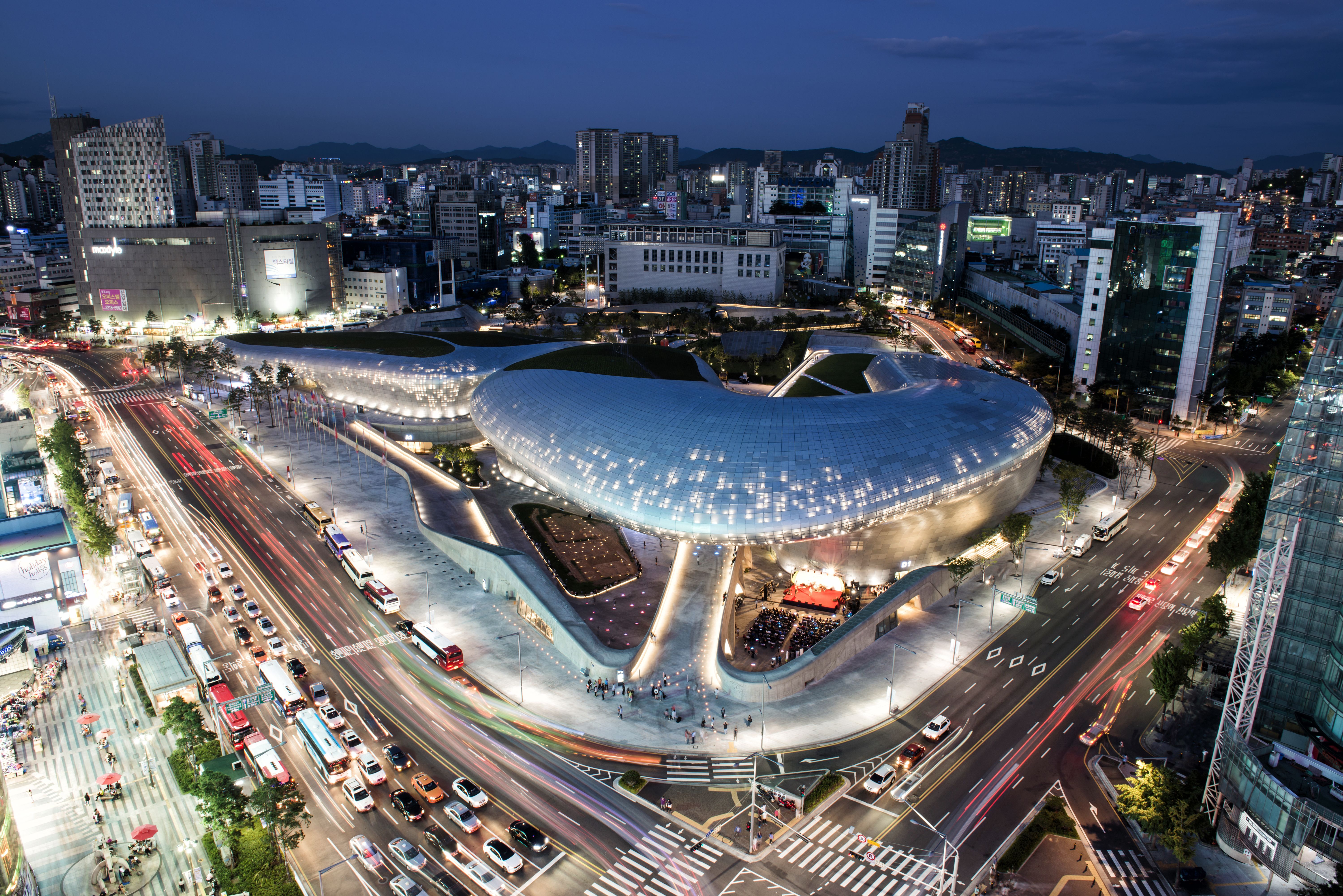
Places
As befits a city of Seoul’s scale, its meeting and event venues come at scale too, none more so than the jewel in the city’s glittering convention centre crown, the COEX Centre. Located in the heart of the Gangnam area to the south of the mighty Han river that divides Seoul, COEX covers a whopping half million square metres of floorspace. This creates the volume for four exhibition halls that can be divided into twelve separate spaces, including a convention hall that can accommodate up to 7,000 people, as well as 54 meeting rooms all with state of the art AV equipment (naturally…it’s Seoul…) all handled by an expert building management team. On top of all that are four theatre spaces and vast areas of circulation floorspace for networking and break out. The facilities also extend on all sides to take in hotels, shopping (no less than Asia’s largest underground mall to hand), office facilities and different transport options, all on one site.
Despite being opened in 1979, the original design of COEX has allowed it to age with grace. With its main curved, glass-fronted entrance overlooking the adjacent Bongeunsa Temple complex, aesthetically it could stake a claim for a centre put up within the last 15 years. To ensure it remains as fresh as it looks, COEX has recently been undergoing renovation that has included reupholstering its auditorium and renovating a theatre and adjacent meeting rooms, with an eye on 2020 as the target year for a full upgrade of its facilities, a not insubstantial task for such a capacious venue.
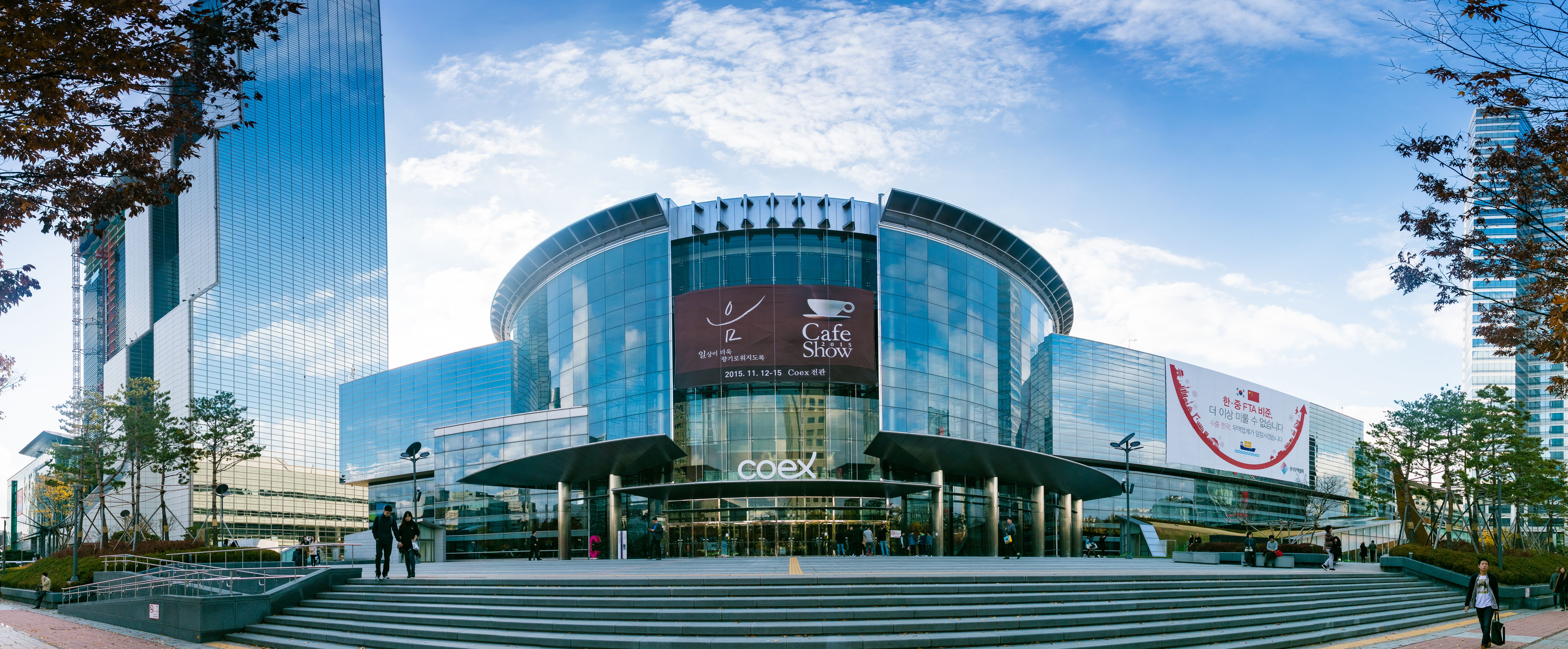
Alongside COEX there are a plethora of options for event hosting in Seoul. The Seoul MICE Alliance publicity signals five further dedicated facilities suitable for hosting profile events, but this is the tip of an iceberg alongside which are a huge number of facilities available in special venues and within the city’s hotels. Talking of which…
Pillows
…as one of Asia’s main mega-cities, Seoul offers a mega-variety of options for the weary delegate’s fatigued cranium to find a feathered cushion to rest on for the night. From the timeless elegance of the city’s more established prestige accommodation, such as the Shilla Hotel and the Grand Hyatt, through to the glistening opulence of the recently arrived Four Seasons Hotel, the city has every recognised hotel brand that you can find on the planet. What sets it apart, however, is that each of these offers a level of service that is second to none.
By way of example, the Grand Hyatt, preferred haunt of American Presidents when in Seoul (most recently by President Obama himself), has a setting with panoramic views of the surrounding cityscape as well as the city’s emblematic Mount Namsan. Oozing class, on entering the voluminous lobby area its huge glazed façade illuminates quality at every turn. The hotel also doesn’t disappoint with the meeting facilities it offers: its Grand Ballroom and Regency Room can cater for 300-2,000 delegates and alongside this it has a number of meeting rooms as well as external spaces suitable for business events and that can be used for further sessions and breakouts. With premier hotels naturally comes premier level cuisine, where again Grand Hyatt meets expectations. Its rooms and leisure offer are also top class – in fact, in effectively every aspect it’s fair to say that meeting presidential standards has become the norm throughout.
Also delivering high standards for those preferring to stay within the precinct of the COEX is the Grand InterContinental Seoul Parnas, a hotel that offers direct access to the convention centre as well as to the underground shopping mall. Remodelled in 2014 and now with 516 rooms and six very high standard restaurants and bars to add to the stunning 1,500m2 ballroom and a further 14 meeting rooms ranging from 41m2 to 407m2, the hotel makes for a very high-end enhancement of the COEX complex. Furthermore, the on site expert meeting and event planners and dedicated team for international and corporate meetings also make it a top meeting venue in its own right.
A further attribute that is keeping Seoul ahead of the eagerly chasing pack of MICE cities is that it is a destination that is constantly refreshing and adding to its infrastructure, with hotels leading the charge. Whilst the Four Seasons opened its doors in 2016, the year 2017 has seen the arrival of the city’s first Le Méridien of the Marriott International brand, a facility in the Gangnam area that has profiled itself around an art theme (an ‘artistic lifestyle destination’) with a centrepiece 1,980m2 M Contemporary art centre. The facility also has 1,650m2 of art-themed meeting space across a ballroom and three meeting spaces that will strongly appeal to events wishing to bring a touch of art into their mix.
Just north of the river from Gangnam in the Yongsan district and yet with its paint to fully dry is perhaps Seoul’s most ambitious hotel project of 2017: the Seoul Dragon City. Opened in October and bringing together four of the Accor hotel brands, this new ‘lifestyle hotelplex’ offers 1,700 rooms across a Grand Mercure (202 rooms), Novotel Suites (286 rooms), Novotel (621 rooms) and ibis Styles (591 rooms). Using shared lobby spaces and aiming to blur the lines between the expectations of differing hotel guests, a serious USP of this complex is its Sky Kingdom that consists of four full floors of entertainment suspended above the 30th floor at the top of the towers between the Grand Mercure and ibis Styles buildings. At these giddy heights can be found a lounge bar recreating a royal European vacation, various cuisines and beverages, a swimming pool, a Skywalk, a performance stage, and the Sky Beach, a private beach club with music and international cuisine. A further draw to Seoul Dragon City will be its meeting facilities within such a ‘total’ complex, with two grand ballrooms of 1,200m2 each alongside 17 meeting rooms all offering the latest in hi-tech spec and with access to 11 restaurants and bars for sustenance and refreshments.
Prandial
Sustenance and refreshments is something that is not in short supply in Seoul, nor are they short of quality. The recently published Guide Michelin for Seoul sets out clearly that the city is a now a major magnet for cuisine of the highest order, at a time when Korean food is also making its mark around the globe. Promoting the national nibble, the capital city has some phenomenal spots to savour incredible Korean flavours.
At the top of the foodie chain is the La Yeon restaurant in the Shilla Hotel. As befits a member of the leading hotels of the world, on the top floor and with stunning views the restaurant has attracted 3 Michelin stars, the highest accolade available from Michelin. The Korean cuisine on offer speaks for itself and the surroundings and service are graceful and mature. Also featuring in the ranks of Michelin is Dosa restaurant in the Sinsa-Dong area, an ultra-modern (and ultra-excellent) micro-restaurant with an open kitchen serving superbly creative cuisine with Korean roots.
Other options to get an understanding of very high end Korean cuisine are the excellent Ondal Restaurant within the sprawling Walkerhill Hotel complex to the north-east of the Han river, as well as the Si Wha Dam restaurant in the city’s Insadong area. For the Korean food aficionado both of these will not disappoint in any way at all, and for those making their first foray into Korean tastes these restaurants guarantee an amazing entry point.
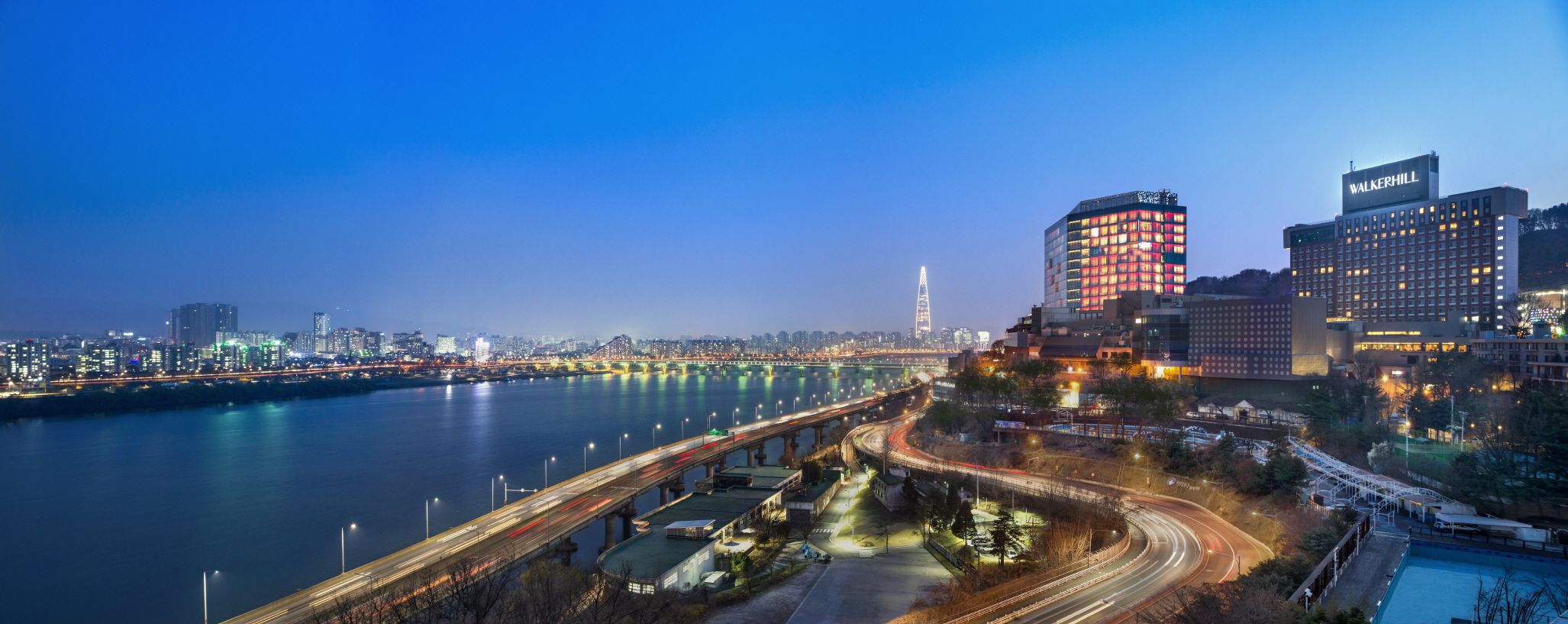
Pursuits
Extravaganzas are indeed in plentiful supply in Seoul for the moments that business delegates wish to let their hair down and escape the conference hall for a while. To really get on top of the city, a good starting point is to head for the Lotte World Tower. Opened in April of this year and standing at 555m, making it the 5th tallest building in the world, its Seoul Sky area on floors 117-123 really does get you on top of the city and offers breathtaking views in every direction from its rooftop observatories.
There are also many less vertiginous options for pleasure pursuits in an around the city, such as at the five royal palaces in the city as well as numerous markets, art galleries, traditional houses and special venues, not to mention natural attractions within and surrounding the city. A good starting point for any of this and to get a good overview of Korean culture is a visit to the Korea House, a former private ministerial house that is now used to promote the unique culture of Korea to natives and foreigners alike. Set in lush gardens and offering traditional Korean food, the venue lends itself perfectly to weddings, but it is also suitable for meetings and special events, with everything required for boutique gatherings available on site.
From Historical to Modern Venues
Similar to the Korea House but in an even more verdant setting is the SamcheongGak, a historic venue that held a Red Cross conference feast commemorating the joint communiqué between South and North Korea, and that today is a traditional and cultural complex consisting of several buildings set in a parkland. Alongside the excellent traditional food on offer in the complex’s restaurant and its refined café area, the facility is also suitable for banquets and functions, ceremonies and weddings, lectures and, of course, smaller scale meetings and events in a very unique setting.
For the more futuristic side of Seoul, nothing can top the late Zaha Hadid’s Dongdaemun Design Plaza (DDP), a spaceship of a building that has landed in the centre of the city’s shopping and fashion quarter. Housing a fashion design information centre with seminar rooms and a lecture hall, the vast and groundbreaking-design venue also includes large conference and exhibition spaces, which made it ideal for co-hosting the International Union of Architects (UIA) event together with COEX in September 2017, an event that brought together 30,000 of the world’s leading architecture and design professionals for an 8-day architectural congress marathon. Not only did DDP play host to the event, but it was a showcase piece itself on 21st century design for many visiting delegates.
If there is any walking left in your legs after these spots, a stroll around the Bukchon Hanok Village area of Seoul gives you a real flavour of how traditional Korean life was before the city mushroomed into one of Asia’s modern megacities. The low, courtyarded houses are perched on a hillside within the city offering wonderful views. Whilst this is still a residential area, it has become a top tourist attraction as well, and an area where people like to dress up in traditional Korean clothing for taking their walking tours.
People
Donning this traditional attire, which you can do by renting it through a traditional attire Hanbok experience, might make you feel a little bit more like a Korean of yesteryear. But it is in meeting the Koreans of today, and particularly those involved in the meetings industry, that you will an understanding of just how Seoul has achieved such prominence in the industry.
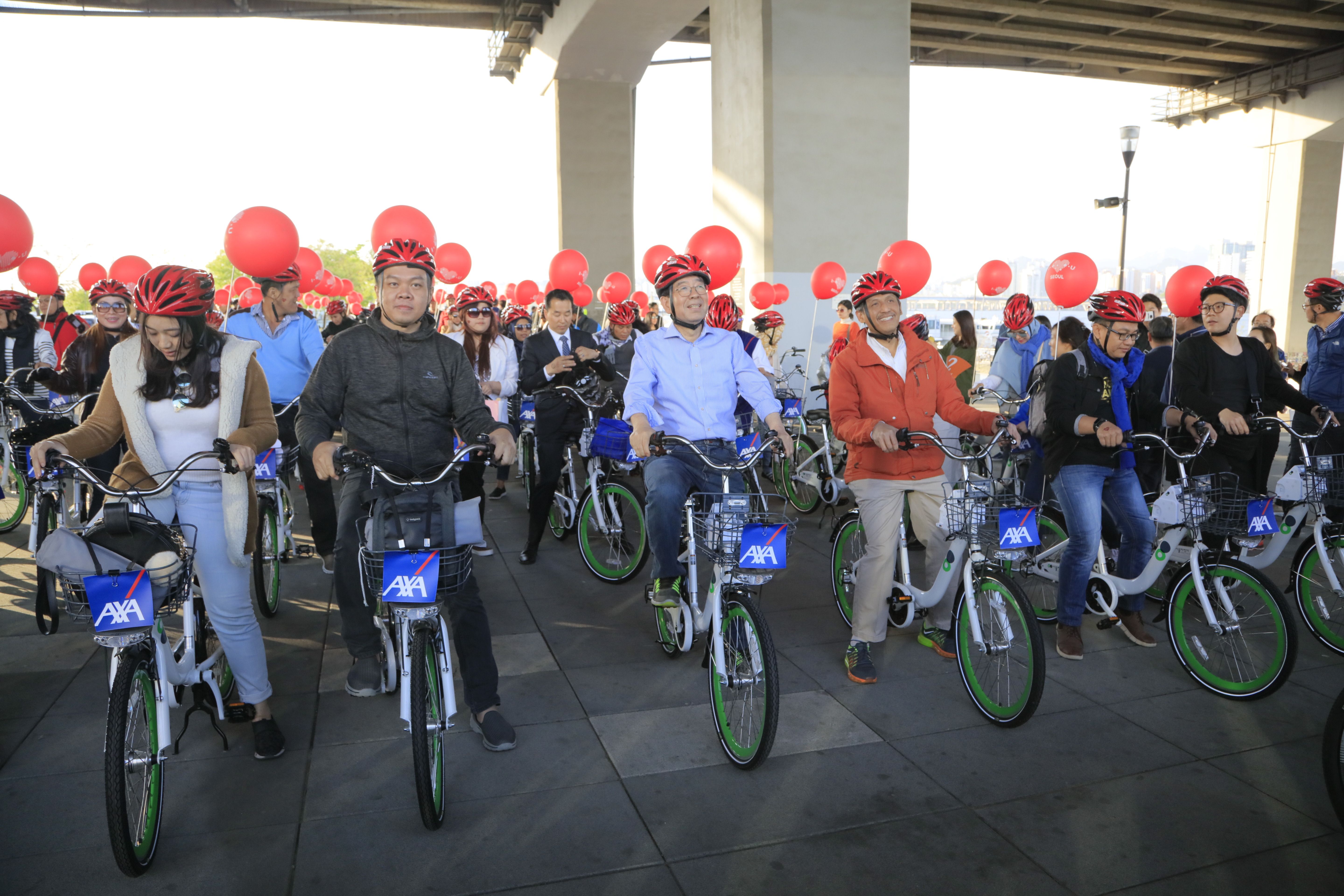
Firstly there are the industry professionals encountered through the core facilities, such as the venue managers and marketing executives, and the hotel managers and their MICE specialists. Every encounter reveals a thorough grasp of the high expectations of business events and their delegates, as well as the levels that need to be attained and maintained to ensure consistent levels of quality.
Secondly, and even more importantly, is the work going on at city level, in particular by the Seoul Tourism Organisation (STO) and its marketing and public relations arm, the Seoul Convention Bureau (SCB). Consistently attracting high calibre staff with a commitment to the industry and to bettering the city’s global standing, over recent years the city has made huge strides in raising international awareness of Seoul as a top quality meeting and event destination. This has been boosted by STO work on the Seoul MICE Alliance, a partnership of government and private sector organisations formed to enhance the city’s global business events competitiveness. With over 260 members of the alliance and a further 38 recently added, the strength of the partnership and commitment of all the people involved ensure that Seoul’s MICE scene continues to nurture and prosper.
Plus…
After all that it’s perhaps hard to believe that there is a ‘plus’ to what Seoul has to offer, but yes, there is. The extra is a new initiative launched by the city of Seoul called ‘PLUS SEOUL Package’ and that offers various advantages to business travellers in the city with its Seoul MICE Alliance partners. These advantages can include financial support, hospitality support, administrative support and a 2017 special support for events that meet specific criteria.
As a very final little extra, Seoul has been working through its marketing campaign to showcase all of the amazing work that it has been doing, a campaign that uses the slogan: I SEOUL U. For those fortunate enough to have shared in the wonderful work the city is doing, it should be added: WE SEOUL U TOO!!


